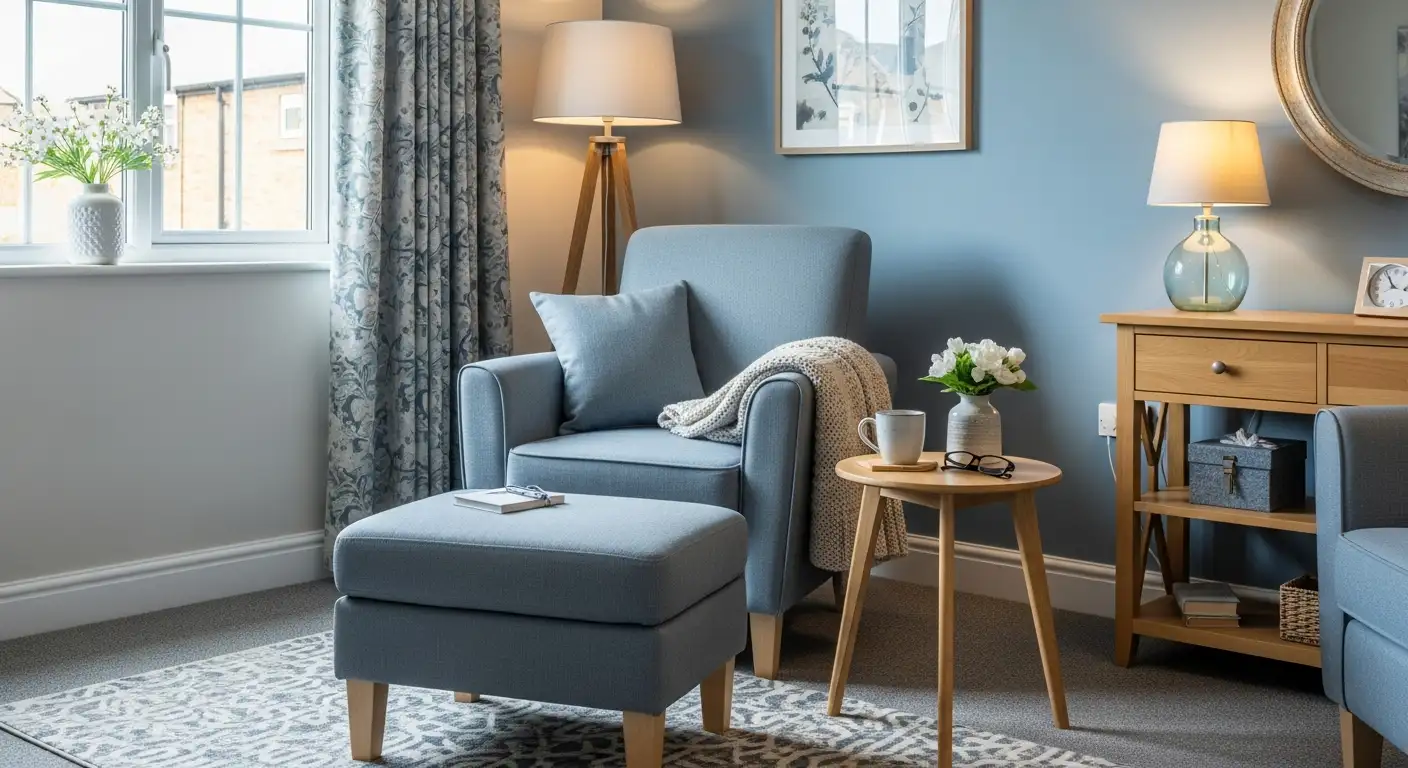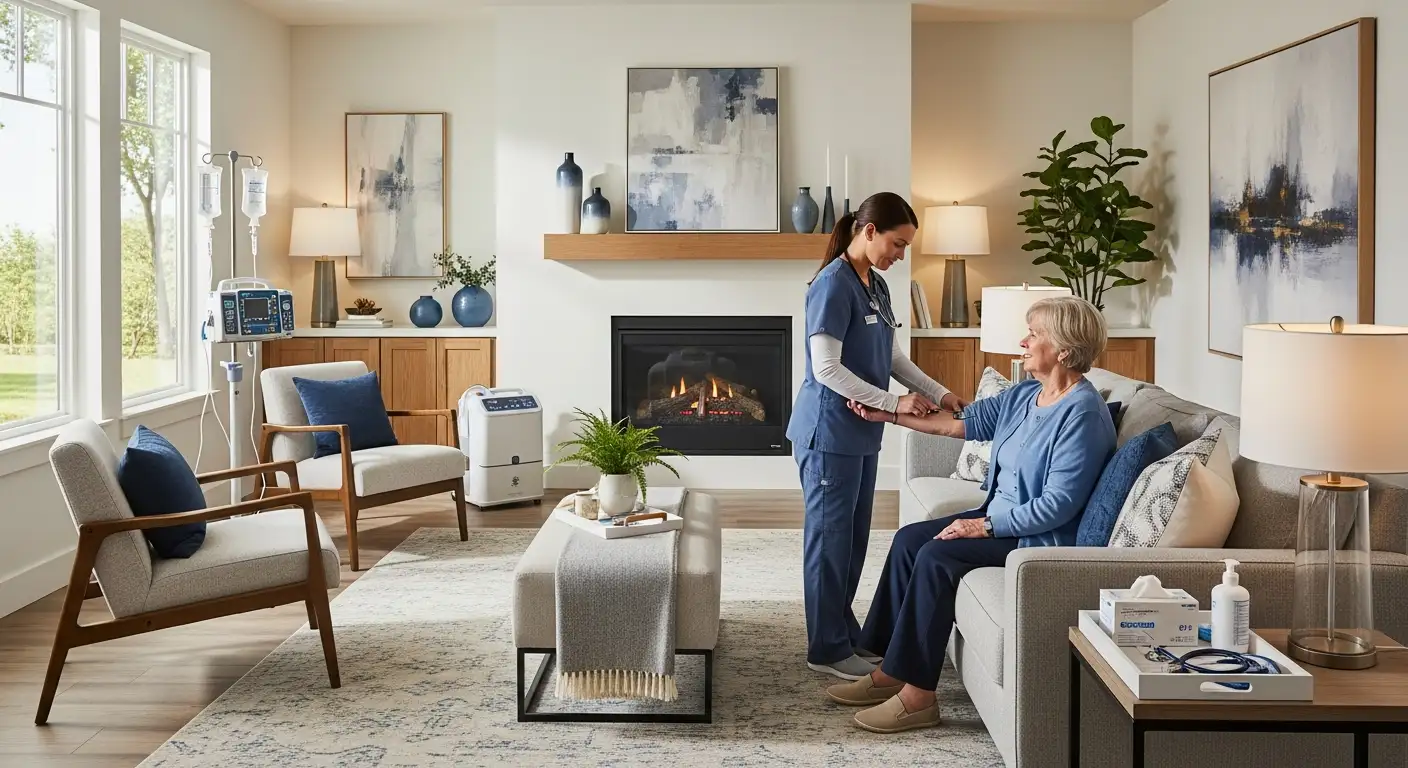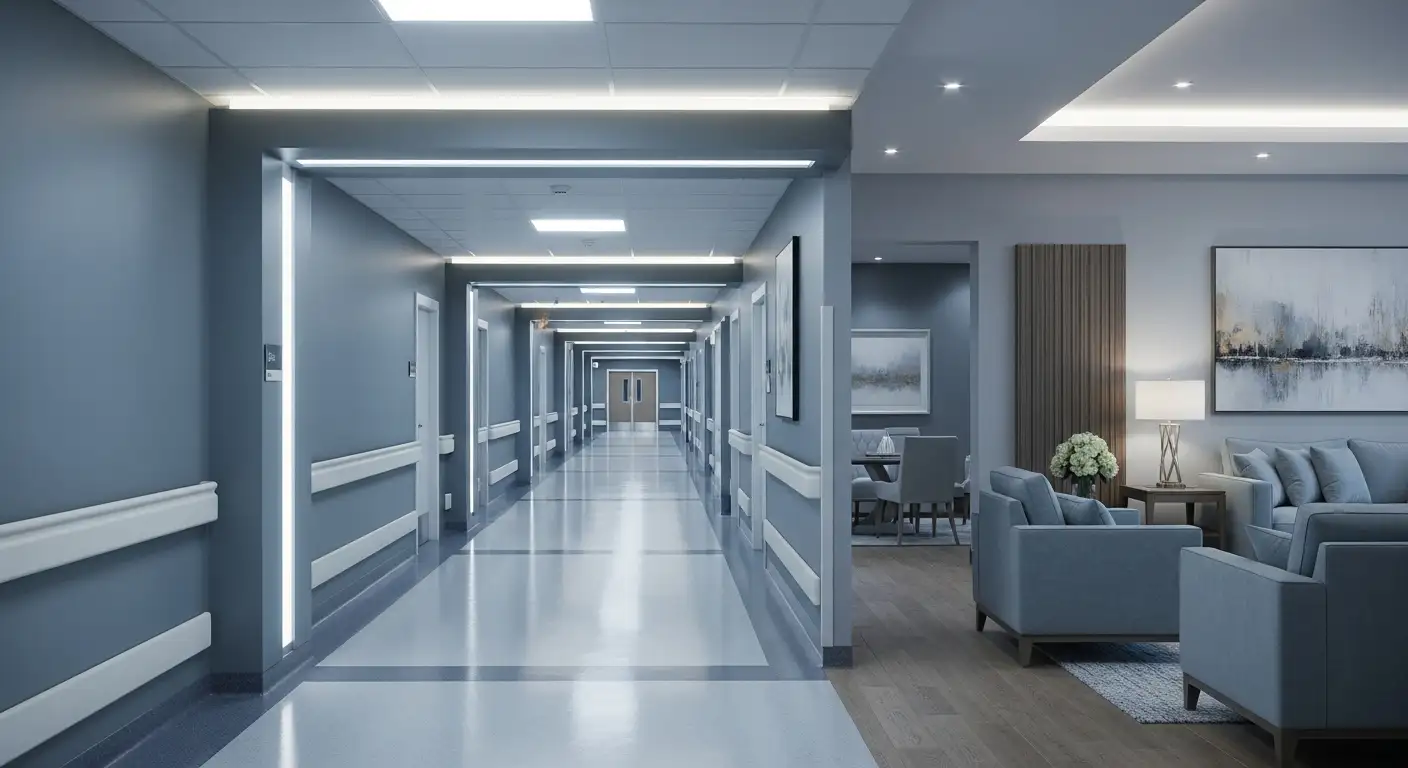Benefits of Physical Therapy for Seniors
Physical therapy plays a crucial role in improving the quality of life for seniors by addressing their unique physical needs and promoting overall well-being. Let's explore the importance of geriatric physical therapy and how it can help prevent age-related decline through strength building.

Importance of Geriatric Physical Therapy
Geriatric physical therapy focuses on helping older adults strengthen the muscles they need to complete everyday tasks, such as walking, climbing stairs, and shifting positions. It differs from other types of physical therapy as it places a greater emphasis on building strength and endurance in older adults.
By attending geriatric physical therapy sessions, older adults can work on maintaining or improving their mobility, level of functioning, and independence in performing everyday tasks. This specialized form of therapy helps promote the overall well-being of seniors, enabling them to remain independent and prevent conditions that may arise from a lack of physical activity, such as muscle atrophy.
Prevention Through Strength Building
Regular physical activity is crucial for older adults to prevent decondition and maintain functional strength, endurance, and range of motion for everyday activities. According to recommendations, adults aged 65 and older should aim to do something physical every day. Additionally, exercises that improve strength, balance, and flexibility should be performed at least two days a week.
Geriatric physical therapy plays a vital role in helping seniors achieve these exercise goals. Through targeted exercises, seniors can improve their strength, flexibility, endurance, and balance, which aids in activities and movements necessary for daily living. These exercises help prevent overall deconditioning and maintain independence in performing essential tasks.
When engaging in physical therapy for seniors, it is important to focus on exercises that suit their needs and abilities. Bodyweight exercises are commonly used, and equipment such as light weights or bands may be provided to increase resistance without overloading joints. The goal is to encourage proper joint movement and muscle activation without putting excessive stress on muscles, tendons, or joints.
To ensure the safety of older adults, it is important to avoid strenuous exercises that involve heavy lifting and high impact. Instead, exercises should be performed slowly and with good control, using only body weight or light resistance. This approach promotes proper joint movement and muscle activation, minimizing the risk of injury.
Geriatric physical therapy offers numerous benefits for seniors, including improved strength, balance, mobility, and overall quality of life. By addressing the specific needs of older adults and promoting strength building, physical therapy plays a vital role in maintaining their independence and preventing age-related decline.
Exercise Guidelines for Older Adults
Maintaining an active lifestyle is essential for the overall health and well-being of older adults. Engaging in regular physical activity helps prevent weakness, muscle atrophy, poor balance, chronic pain, and the increased risk of falls. To ensure the safety and effectiveness of exercise routines for older adults, it is important to follow specific guidelines.
Daily Physical Activity Recommendations
According to Verywell Health, adults aged 65 and older should aim to do something physical every day to prevent deconditioning and maintain functional strength, endurance, and range of motion for everyday activities. This can include light activities such as walking, cooking, cleaning, or gardening. By incorporating daily physical activity, older adults can improve their overall health and well-being.
Types of Recommended Exercises
To enhance strength, balance, and flexibility, older adults should perform exercises that target specific muscle groups. These exercises help improve stability, power, and mobility for activities like getting up from a chair, going up and down stairs, and walking. Examples of beneficial exercises include:
- Standing up and sitting down in a chair: This exercise strengthens the muscles in the legs and helps improve mobility.
- Step-ups: Step-ups involve stepping onto a platform or step, which helps strengthen the lower body muscles and improve balance.
- Bridges: Bridges target the glutes and core muscles, helping to improve hip stability and lower back strength.
- Clamshells: Clamshells target the muscles of the outer hips, aiding in hip stability and preventing injuries.
- Leg lifts: Leg lifts are effective for strengthening the quadriceps and improving overall leg strength.
- Balance exercises: These exercises, such as standing on one leg or performing heel-to-toe walks, help improve balance and reduce the risk of falls.
It's important to note that these exercises are just a few examples, and there are many other exercises that can benefit older adults. The choice of exercises should be based on individual needs and capabilities.
Avoiding Injury During Exercise
To ensure the safety of older adults during exercise, it is crucial to avoid strenuous exercises involving heavy lifting and high impact. Exercises should be performed slowly and with good control, using only body weight or light resistance to encourage proper joint movement and muscle activation without putting excessive stress on muscles, tendons, or joints.
By following proper form and technique, older adults can minimize the risk of injury. It is also advisable to work with a physical therapist or exercise professional who specializes in working with older adults. They can provide guidance, monitor progress, and modify exercises as needed to ensure safety and effectiveness.
Incorporating regular physical activity into the daily routine of older adults is key to promoting their overall health and well-being. By following exercise guidelines, engaging in recommended exercises, and prioritizing safety, older adults can maintain their independence, improve their quality of life, and enjoy the benefits of an active lifestyle.
Specific Exercises for Seniors
Physical therapy for seniors often includes specific exercises that target different muscle groups to improve strength, stability, balance, and power. These exercises are designed to enhance functional abilities and promote independent living. Let's explore the targeted muscle groups and some examples of beneficial exercises for seniors.
Targeted Muscle Groups
Good exercises for older adults primarily focus on muscle groups that play a crucial role in daily activities such as getting up from a chair, going up and down stairs, and walking. Some of the key muscle groups targeted in physical therapy for seniors include:
- Quadriceps: The quadriceps muscles, located in the front of the thighs, are essential for activities such as standing up and sitting down.
- Glutes: The gluteal muscles, comprising the gluteus maximus, medius, and minimus, are vital for stability and power during movements like walking and climbing stairs.
Examples of Beneficial Exercises
Here are some examples of exercises that can be beneficial for seniors:
- Standing up and sitting down in a chair: This exercise helps to strengthen the quadriceps and improve stability. Start by sitting in a chair with feet flat on the floor. Stand up slowly using the leg muscles, then lower yourself back down with control. Repeat for a set number of repetitions.
- Step-ups: Step-ups are effective for strengthening the quadriceps and glutes, as well as improving balance. Begin by standing in front of a step or sturdy platform. Step one foot onto the platform, pushing through the heel, and bring the other foot up. Step back down and repeat, alternating legs.
- Bridges: Bridges target the glutes and are beneficial for hip stability. Lie on your back with knees bent and feet flat on the floor. Lift your hips off the ground, squeezing the glutes, and hold for a few seconds before lowering back down. Repeat for several repetitions.
- Clamshells: Clamshells engage the gluteus medius, which helps with hip stability. Lie on your side with knees bent and feet together. Keeping the feet together, lift the top knee while keeping the feet in contact. Lower back down and repeat on the other side.
- Leg lifts: Leg lifts are excellent for strengthening the quadriceps and improving balance. Stand behind a chair for support, then lift one leg straight out in front of you, keeping it parallel to the ground. Hold for a few seconds before lowering it back down. Repeat with the other leg.
These are just a few examples of beneficial exercises for seniors. It's important to consult with a physical therapist or healthcare professional to determine the specific exercises that are suitable for individual needs and abilities.
In addition to these exercises, other forms of exercise such as resistance bands, chair exercises, and even yoga can be incorporated into a senior's physical therapy routine to enhance strength, flexibility, and overall well-being. Caregivers can provide assistance and guidance during these exercises, ensuring safety and proper form.
Role of Physical Therapy in Elderly Health
Physical therapy plays a vital role in improving the health and well-being of older adults. It focuses on addressing the unique needs and challenges faced by seniors, helping them enhance their quality of life and maintain their independence. Two key aspects of physical therapy for the elderly are improving quality of life and preventing falls and injuries.
Improving Quality of Life
Geriatric physical therapy is specifically designed to help older adults strengthen the muscles needed for everyday tasks like walking, climbing stairs, and shifting positions. By attending geriatric physical therapy sessions, older adults can improve their overall mobility, level of functioning, and ability to perform daily activities independently. The goal is to prevent conditions that may arise from a lack of physical activity, such as muscle atrophy.
Geriatric physical therapy differs from other types of physical therapy as it emphasizes building strength and endurance in older adults. It focuses on improving their ability to walk, enhancing mobility, and promoting independence in performing everyday tasks. By addressing the specific needs of the elderly, physical therapy helps seniors maintain their functional abilities and enhance their overall quality of life.
Preventing Falls and Injuries
Falls and injuries are significant concerns for older adults. Physical therapy plays a crucial role in preventing these incidents by focusing on exercises that improve strength, balance, and flexibility. According to Verywell Health, adults aged 65 and older should engage in physical activity every day to prevent deconditioning and maintain functional strength, endurance, and range of motion for everyday activities.
Geriatric physical therapy utilizes exercises that target strength, flexibility, endurance, and balance to aid in activities and movements while preventing overall deconditioning. These exercises often involve body weight movements and may incorporate equipment like light weights or resistance bands to provide increased resistance without overloading joints.
To ensure safety during exercise, it is important for older adults to avoid strenuous activities that involve heavy lifting and high impact. Exercises should be performed slowly and with good control, focusing on proper joint movement and muscle activation. By using body weight or light resistance, physical therapy helps older adults improve their strength and mobility without putting excessive stress on muscles, tendons, or joints, reducing the risk of injury.
Through improving quality of life and preventing falls and injuries, physical therapy plays a crucial role in supporting the health and well-being of elderly individuals. By addressing their specific needs and designing personalized exercise programs, physical therapists empower older adults to maintain their independence and enjoy a higher quality of life.
Advanced Techniques in Physical Therapy
As the field of physical therapy continues to evolve, various advanced techniques have emerged to enhance the rehabilitation process for the elderly. These techniques aim to optimize outcomes and improve the overall quality of care. In this section, we will explore three notable advanced techniques: blood flow restriction rehabilitation, use of exoskeletons in rehabilitation, and innovative technologies in therapy.
Blood Flow Restriction Rehabilitation
Blood Flow Restriction (BFR) Rehabilitation has gained popularity in the clinical setting for patients recovering from injury or surgery. This technique involves applying a tourniquet cuff to the proximal thigh or arm to reduce arterial inflow and venous return, enabling improvements in muscle size and strength with low-load exercises. Well-structured trials have shown that BFR is effective and safe for various populations, including healthy, clinical, and elderly individuals.
BFR rehabilitation holds promise in improving muscle strength and function for the elderly, who may experience limitations in traditional high-load exercises. By utilizing lower loads combined with blood flow restriction, elderly individuals can achieve significant gains in muscle strength and hypertrophy. This technique can be particularly beneficial for those who have difficulty with conventional resistance training methods.
Use of Exoskeletons in Rehabilitation
Exoskeletons have been developed to aid in the rehabilitation of individuals with high-energy lower extremity trauma. An example of such an exoskeleton is the Intrepid Dynamic Exoskeletal Orthosis (IDEO). This carbon fiber ankle-foot orthosis helps restore plantarflexion force and reduce pain, enabling patients to tolerate high-impact activities and improve functional outcomes. The combination of the IDEO and specialized rehabilitation programs has been shown to reduce delayed amputation rates, improve self-reported scores, and enhance return-to-duty rates.
Exoskeletons provide external support to aid in mobility and movement retraining. They assist in restoring proper gait patterns and reducing joint stress during the rehabilitation process. By facilitating more natural movements, exoskeletons can enhance muscle activation, improve balance, and promote functional recovery in the elderly population.
Innovative Technologies in Therapy
Innovative technologies have revolutionized the field of physical therapy, offering new tools and resources to enhance treatment outcomes. Some notable examples include force plates, video motion capture and biofeedback tools, and musculoskeletal ultrasound.
- Force plates are used to measure force production over time, providing insights into the kinetics of functional movement. They are particularly useful in assessing ground-based movements and identifying deficits in kinetic performance during rehabilitation. Asymmetry in force production has been linked to subsequent injury in sports populations.
- Video motion capture and biofeedback tools involve the use of high-speed video and motion capture technology to analyze and provide real-time feedback on a patient's movement. These tools have been found to be more effective in motor learning than conventional physical therapy, enabling patients to improve movement quality during rehabilitation exercises.
- Musculoskeletal ultrasound is used to visualize soft tissue healing and quantify muscle architecture, providing valuable information on tissue health and load-bearing capacity. This technology guides loading prescription during rehabilitation and improves clinical decision-making. It allows for a better understanding of muscle recovery from injury and facilitates personalized treatment plans.
By utilizing these innovative technologies, physical therapists can assess, monitor, and optimize the rehabilitation process for elderly individuals. These advanced techniques play a crucial role in promoting functional recovery, improving outcomes, and elevating the quality of life for seniors undergoing physical therapy.
Holistic Approach to Physical Health
To promote overall physical well-being in older adults, a holistic approach that incorporates regular exercise, tools and aids, and alternative therapies can be beneficial.
Benefits of Regular Exercise
Regular physical activity in middle-aged and older adults is associated with a reduced risk of functional limitations and disability in older age. Engaging in aerobic exercises, such as walking, swimming, or cycling, can contribute to higher functional status in older adults and reduce the risk of functional limitations or disability. Moderate to high levels of physical activity have been shown to confer these benefits, with a reduction in the risk for various functional outcomes estimated to be in the range of 30 to 50%.
In addition to physical benefits, regular exercise is related to better cognitive function and a reduced risk of developing dementia in older adults. However, the effects of exercise interventions on cognitive function indices are mixed. Therefore, incorporating both aerobic and cognitive exercises, such as puzzles or memory games, may be beneficial for maintaining cognitive health.
Incorporating Tools and Aids
As individuals age, the use of tools and aids can enhance safety and accessibility during exercise. For example, using resistance bands or weights can provide added resistance and improve muscle strength. Additionally, balance aids like stability balls or balance boards can help improve stability and reduce the risk of falls.
When incorporating tools and aids, it's important to consider individual needs and capabilities. Consultation with a physical therapist or healthcare professional can help determine the most suitable tools and aids for specific exercises and ensure proper usage to prevent injury.
Alternative Therapies for Seniors
In addition to traditional exercise programs, alternative therapies can complement physical therapy for seniors. These therapies may include practices such as yoga, tai chi, or aquatic therapy. These low-impact activities can improve balance, flexibility, and overall well-being.
Alternative therapies often focus on mindfulness, breathing techniques, and gentle movements, making them suitable for individuals with various physical abilities. Engaging in these practices can provide a sense of relaxation, stress reduction, and increased body awareness.
When considering alternative therapies, it's important to consult with a qualified professional to ensure safety and suitability for individual needs. Physical therapists or instructors trained in specific alternative therapies can guide seniors through exercises that address their unique requirements.
By adopting a holistic approach to physical health, incorporating regular exercise, utilizing tools and aids, and exploring alternative therapies, older adults can enhance their overall well-being. Regular physical activity, along with the appropriate tools and aids, can improve functional status, reduce the risk of falls, and promote longevity. Alternative therapies can provide additional benefits, such as relaxation and increased body awareness. It's important to personalize the approach based on individual abilities, consult professionals when needed, and prioritize safety and enjoyment in the pursuit of a healthy and active lifestyle.



